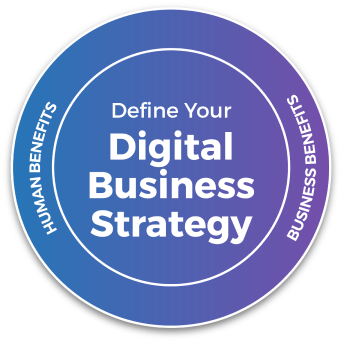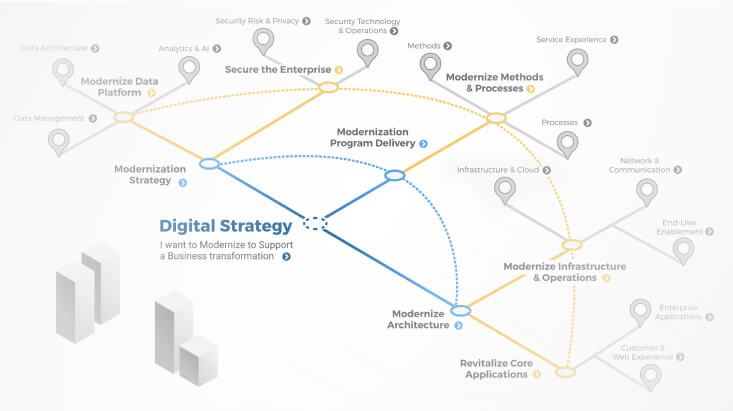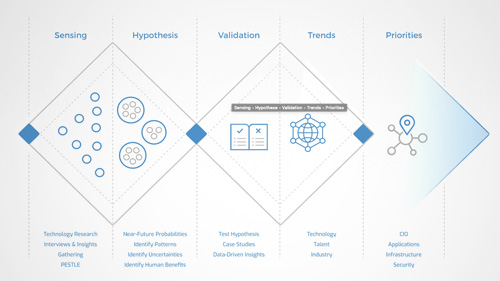60%
of people on Earth use the internet
Compete Effectively in the Digital Economy
It's time to decide how to best recover from the pandemic. As we emerge from the pandemic, your choices range from blindly turning everything back on to rising to the challenge of building a resilient organization that can thrive in a digital economy.
Talk to an Analyst

As the world emerges from the pandemic, two absolute imperatives face leaders today: 1) Recover from COVID-19 by returning to growth, and 2) Bolster the resilience of their organizations to future shocks.
The return to growth can unfold by automating costly and ineffective tasks, procedures, and processes with proven and new “digital transformation” alternatives described within this report and by exploring new value chains enabled by digital channels. Resilience can be achieved by diversifying segments and markets and by enabling a delocalized workforce to operate autonomously.
Digital transformation refers to steps undertaken to change enterprise tasks, procedures, and processes that are outdated, ineffective, and costly in nature into methods that are far more automated, profitable, and productive.
The term “Digital Economy” is a concept that involves an economic environment reliant upon, or significantly enhanced by the use of digital inputs, digital infrastructure, digital services and data, to produce a flow of output of goods and services that people utilize. It refers to all producers and consumers, including governments. The notion of the digital economy has become commonplace to describe how digital technology is changing patterns of production and consumption.
Download ReportDefine a Digital Business Strategy to:

of people on Earth use the internet

of global retail sales performed via e-commerce

e-commerce share of total b2b sales in US

The digital economy accounted for 9.6% (2.05 T) of US GDP (21.4 T)
To avoid unintended consequences of automation, a digital business strategy cannot lose focus on those the organization is creating value for. Human experience, resilience, and trust must be held in balance with the business benefits of transformation.

Too many digital transformation initiatives have failed, resulting in an excess of wasted investment and risk hesitancy. True business fundamentals must be brought back into the equation in order to succeed in transformation.
Digital transformation is not simply about technology. Your digital strategy efforts must capture how your organization creates value in a digital era.
The global pandemic has unlocked new needs and opportunities for organizations to create value for their customers and citizens. Make sure you have a structure that enables continuous exploration.
Digital transformation is not necessarily about headcount reduction. The workforce and culture are integral to the future of the organization. Organizations must strive to keep learning and growing in diverse ways.
With new opportunities come new risks. Organizations must meet new digital threats head on, simultaneously focusing on operational responsiveness and resilience.
To execute on a transformation, skills to support technological innovation will be necessary to develop internally and procure through partnerships.

Modernization research that meets you where you are today and takes you to your future.

Balance the promise of the emerging technologies of the future with managing the priorities of the present.